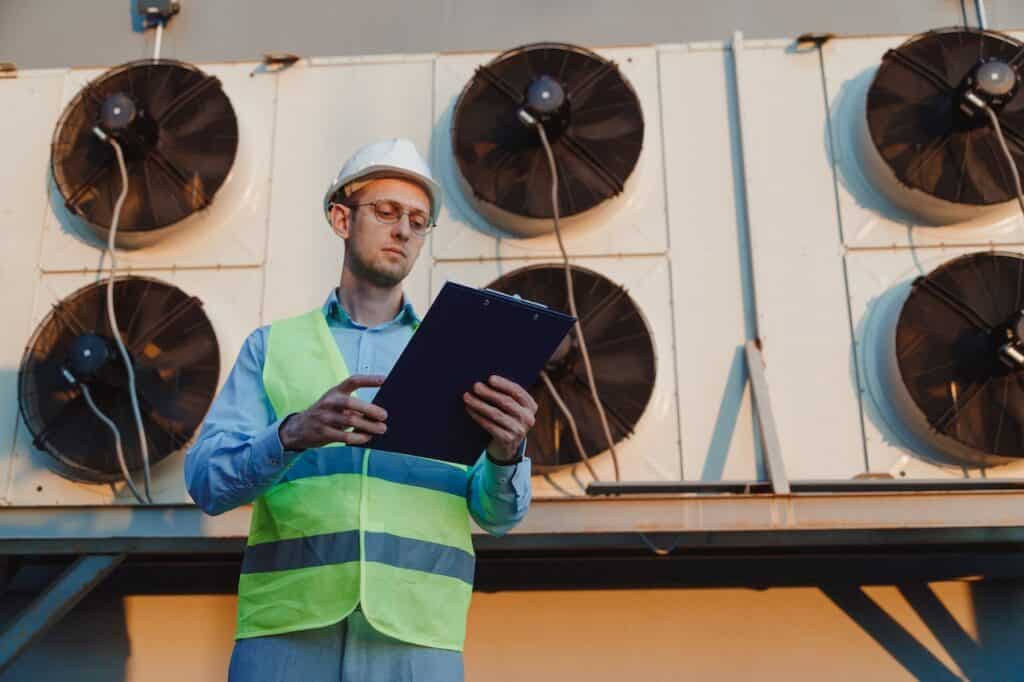Air-Cooled Chillers, Uncategorized
What Is Critical Redundancy in Chillers?
In the world of industrial cooling systems, chillers are the unsung heroes that play a crucial role in maintaining temperature control for various applications. To ensure uninterrupted cooling and mitigate the risks associated with chiller failures, critical redundancy becomes a vital consideration.
In this blog, we will explore the concept of critical redundancy in chillers, its importance, its key components, and the benefits it brings to industrial systems.
What Is a Chiller?
Chillers are refrigeration systems designed to remove heat from a space or process fluid. It works by cooling water or other fluids and is commonly employed in various industries manufacturing, data centers, pharmaceuticals, and medical imaging.
Chillers play a crucial role in maintaining precise temperatures, which is essential for ensuring optimal process efficiency and creating comfortable environments in various applications.
What Is the Basic Functionality of Chillers?
Chillers work on the principle of the refrigeration cycle, where a refrigerant absorbs heat from a low-temperature environment (the chilled water or process fluid) and releases it to a higher-temperature environment during the condensation process.
What Is Redundancy in Industrial Systems?
Redundancy in the context of industrial systems refers to the incorporation of backup components or systems to ensure continuous operation in the event of a primary component failure. The objective is to reduce the risk of unplanned downtime, which can lead to operational disruptions and financial losses.
What Are the Risks if a Chiller Were to Fail?
The failure of a chiller can have significant consequences, including:
- Disrupted Operations: Manufacturing processes, data centers, and other critical applications rely on consistent cooling. Chiller failures can halt production and result in costly downtime.
- Product Quality and Safety: In industries such as pharmaceuticals and food processing, precise temperature control is essential for product quality and safety. Chiller failures can compromise these critical parameters.
- Financial Losses: Downtime and emergency repairs can lead to financial losses due to decreased productivity and increased maintenance expenses.
What Is Critical Redundancy?
Critical redundancy in chillers ensures that essential components and systems have backup options to maintain performance in case of failure. The main objective of critical redundancy is to enhance the chiller system’s resilience and reduce the risk of complete shutdowns, thereby preserving productivity and preventing significant disruptions.
What Are the Critical Components and Systems Involved?
Several components are considered critical for redundancy in a chiller system, including:
- Compressors: Compressors are the heart of a chiller and raise the refrigerant’s pressure and temperature. Redundancy in compressors ensures continuous cooling capacity.
- Pumps: Pumps circulate the chilled water or process fluid through the system. Backup pumps guarantee continuous fluid flow even if one pump fails.
- Controls: Redundant control systems help maintain stability and ensure seamless switching in case of a primary control system failure.
Benefits of Critical Redundancy in Maintaining Chiller Performance
Implementing critical redundancy in chiller systems brings several benefits:
- Enhanced System Reliability: Critical redundancy reduces the dependence on individual components and systems, which makes the chiller system less susceptible to single points of failure.
- Reduced Likelihood of Failures: Backup components and systems lower the probability of unexpected shutdowns and minimize the risk of operational interruptions. If one component malfunctions or breaks down, the backup component can take over.
- Minimized Downtime: Critical redundancy ensures that the chiller system can continue to function, even during component failures serving to significantly reduce downtime.
Key Elements of Redundancy: Redundant Chiller Units, Systems, and Components
Installing multiple chiller units, each capable of handling the full cooling load, provides redundancy and load-sharing capabilities. Beyond chiller units, redundancy extends to backup pumps, cooling towers, and electrical systems. These redundant elements ensure continuous operation and prevent catastrophic system failures.
- Redundant Chiller Units: Installing multiple chiller units, each capable of handling the full cooling load, is a common approach to achieving redundancy in chiller systems. This setup allows for load-sharing capabilities and distributes the cooling load among the available chillers. In the event of a single chiller unit failure, the remaining functioning chillers can seamlessly take over the load, ensuring continuous cooling capacity and preventing disruptions to the process.
- Backup Pumps and Cooling Towers: In addition to redundant chiller units, redundancy extends to other critical components like backup pumps and cooling towers. Redundant pumps ensure continuous circulation of chilled water or process fluid, even if one pump malfunctions or requires maintenance. Similarly, redundant cooling towers provide backup cooling capacity, which ensures the chiller system can maintain proper heat dissipation during normal operation or if one cooling tower is out of service.
- Redundant Electrical Systems: Electrical systems are an integral part of chiller operation, and redundancy in this area is equally important. Backup electrical systems, such as backup power supplies or redundant electrical components, ensure the chiller system can continue to function even in the event of power-related issues or failures in the primary electrical setup.
Things to Remember
Critical redundancy in chillers is a vital aspect of industrial cooling systems, ensuring uninterrupted cooling performance and mitigating the risks associated with chiller failures.
By incorporating backup components and systems, the chiller system gains resilience and reliability, allowing industries to maintain smooth operations, product quality, and profitability.
As the demand for consistent cooling grows, critical redundancy becomes an essential consideration for any modern and robust chiller system.
Trust KKT Chillers to Help Keep Operations Going
At KKT Chillers, we are committed to providing top-quality industrial chillers. Our goal is to provide you with the ultimate peace of mind and confidence in a cooling system’s performance.
We understand that critical redundancy is vital for uninterrupted operations and have chillers available for specific applications. Contact us today for a free estimate on our chillers.
